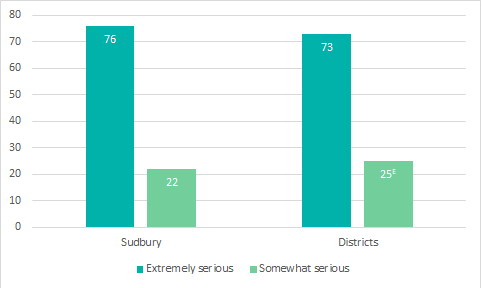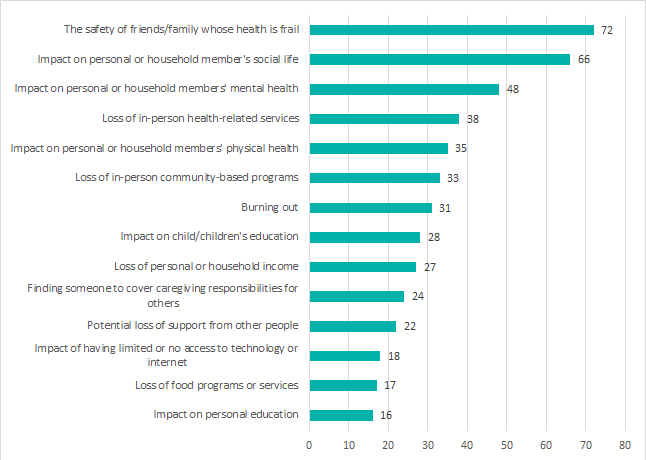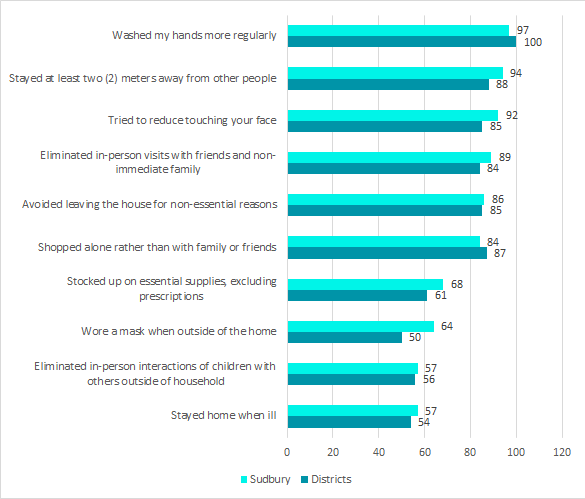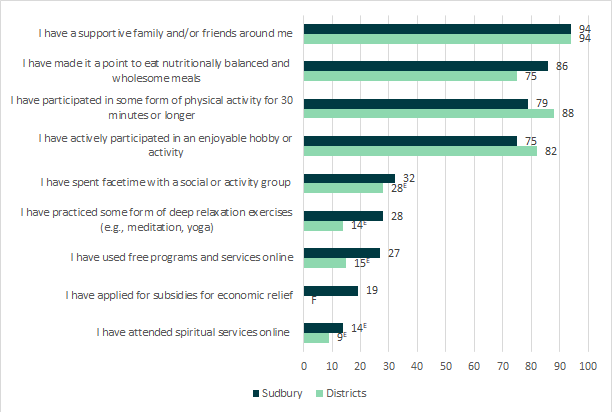COVID-19 community phone survey: Knowledge, behaviors and impacts
PDF version (374 KB)
Between May 15 and June 11, 2020, Public Health Sudbury & Districts conducted a bilingual telephone survey of persons aged 16 years and older to better understand knowledge, behaviours and impacts of COVID-19 in Sudbury & Districts. The survey was completed by CCI Research on behalf of Public Health. The results from this survey are used by Public Health to inform planning and service coordination.
- Respondent profile
- Perceived seriousness of the COVID-19 pandemic
- Impact of COVID-19
- Precautions taken to reduce risk
- Personal situational assessment
Sample
- 476 surveys were completed
- 77% reported residency in Greater Sudbury*
- 23% reported residency within the districts of Sudbury East, Manitoulin Island and Espanola
- 5% completed the survey in French
- 69% of the sample identified as female
- 70% of respondents were 55 years of age or older
- 15% of respondents were between the ages of 40 and 54 years
- 51% of respondents were employed
- 35% of employed respondents were working from home because of COVID-19
*Greater Sudbury includes: Capreol, Coniston, Falconbridge, Garson, Skead, Wahnapitae, Walden, Lively, Azilda, Chelmsford, Valley East, Onaping Falls and Copper Cliff
Perceived seriousness of the COVID-19 pandemic
Key findings:
- The majority of respondents in Sudbury and districts perceived the COVID-19 pandemic as serious.

Impact of COVID-19
Key findings:
- Overall, the primary concern identified by the survey sample in Sudbury and districts was the safety of friends or family whose health is frail (72%, n=346), followed closely by the impact on personal or household member’s social life (66%, n=292).

Precautions taken to reduce risk
Key findings:
- Regular hand washing was the most reported precaution taken in Sudbury and districts (98%, n=468).
- District respondents were less likely to wear a mask (face covering) outside of the home (50%, n=32), but more likely to shop alone (87%) compared to respondents from Sudbury (64%, 84%).

Personal situational assessment
Key findings:
- The primary sentiment in Sudbury and districts was the feeling of having a supportive family and/or friend (94%, n=449).
- Within the last seven days, more participants from the districts than from Sudbury reported participating in some form of physical activity for 30 minutes or longer (88%) and actively participating in an enjoyable hobby or activity (82%).

E: Interpret with caution: high sampling variability
F: Estimates has been suppressed due to high sampling variability
Note: Percentages are weighted, counts are unweighted.
This item was last modified on October 19, 2020
